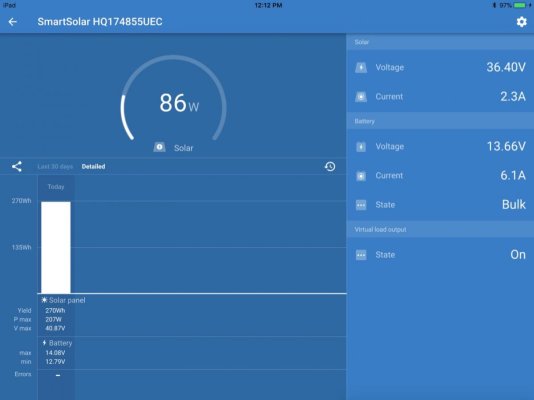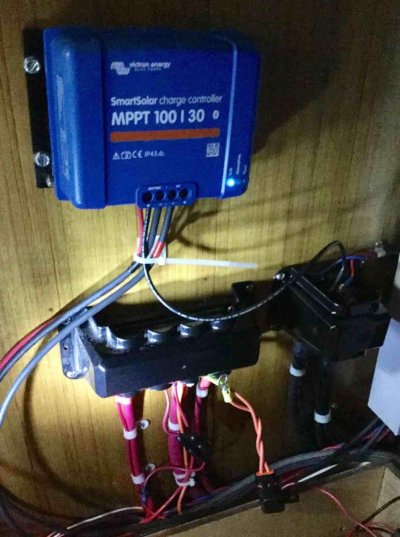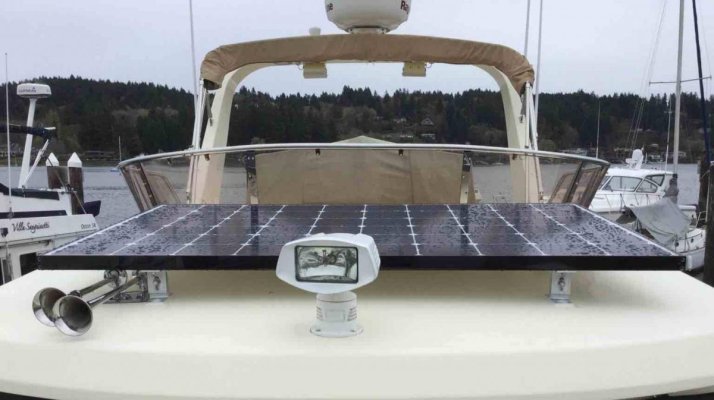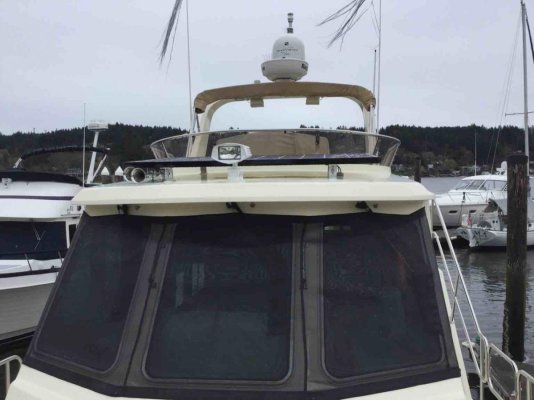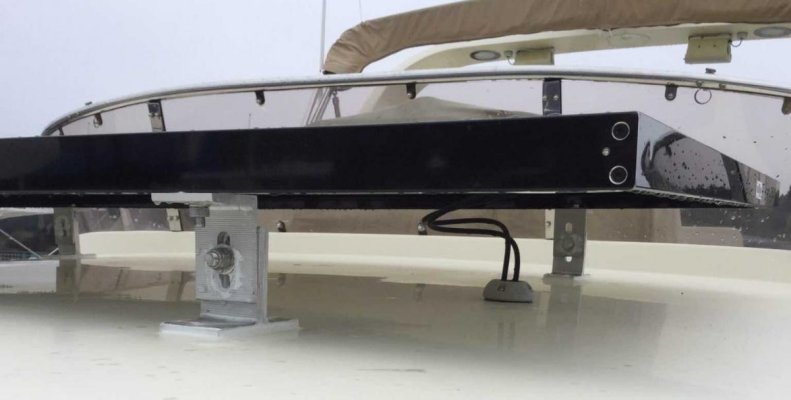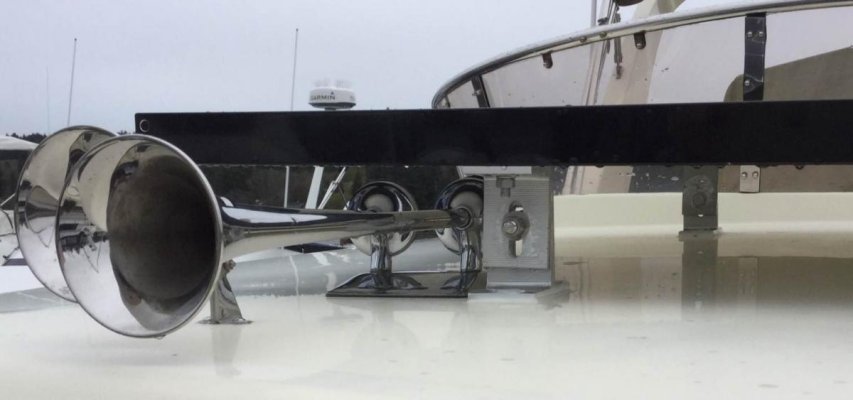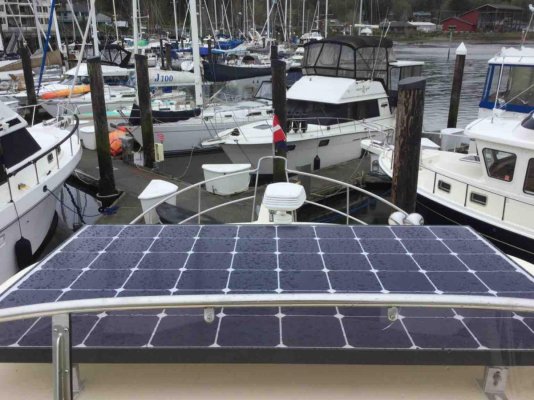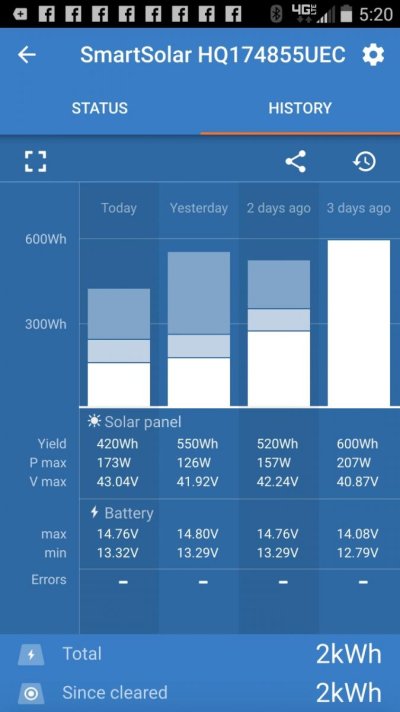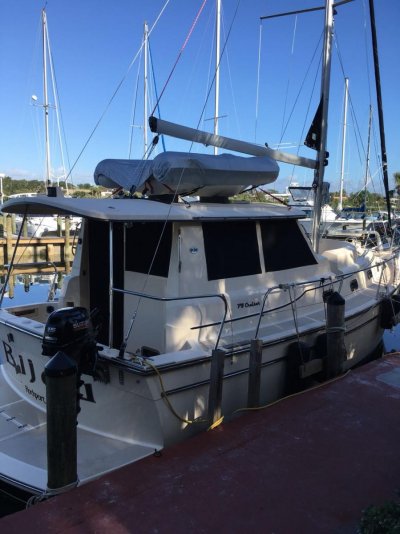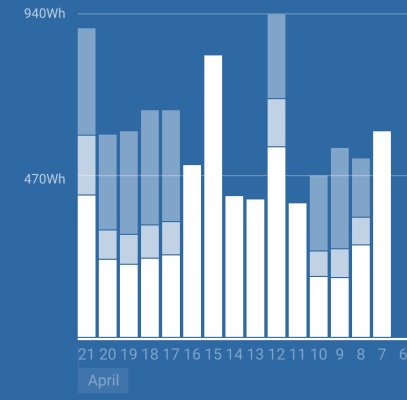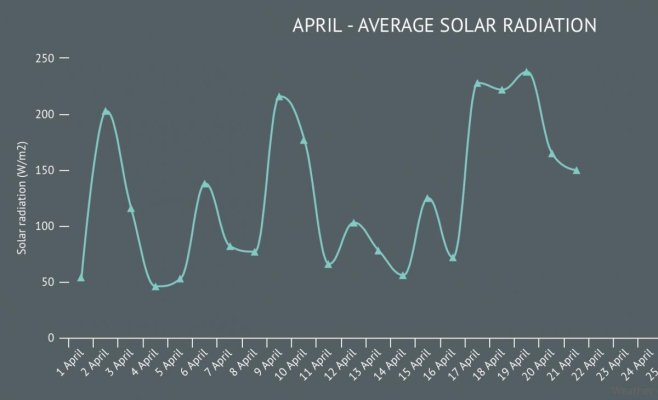muttskie
Veteran Member
I was a able to get part of a day to try and install that panel. The weather was good and tomorrow calls for wind and rain.
My wife was able to come out to help me lift the panel up on the PH roof and get it in place. Once there, the slope and curve of the PH roof became apparent. I had to do some adjusting to mounts so their base will sit flush on the roof. I used the 3M VHB tape and then (in the dark unfortunately) used 4200 to seal the edge of the tape bond.
When I got the panel in place I quickly wired it up just as the sun was about to go below the hills. I connected the Victron app to the SmartSolar controller and saw that the panel was putting out a whopping 4 watts just before the sun when below the hills. At least it tells me that it was basically wired up correctly.
I did discover that somehow I killed the saloon light circuit, so I need to figure that out.
I will try and take some photos this weekend.
Nice. Congratulations. I'll be interested in the coming performance reports.

I am earlier in the process than you are. I have been acquiring the necessary pieces, wiring, etc. and am ready to begin the wiring installation. I am locating the Victron 100/50 in the aft engine room close to the battery bank (for temperature equivalency). I also have to run the Victron VE Direct cable from the controller back up to the pilot house to the Color Control GX and BMV712 monitor. At the same time I am going to add a Balmar Smart Gauge (another cable run from the battery bank up to the pilot house!) as another monitor to compliment the BMV712. I had one of these on my sailboat and it is very useful.
I am interested in your comment about the pilothouse roof curvature. One of the issues about this process is the need, or lack of, to mount panels on a flat plane. I know you have only one panel, so it does not apply to you, but I am mounting two panels. Would anyone care to opine about mounting them on a flat plane or not? It would be easy for me to mount them with a couple of degrees of difference between them. Not much really. Not more than 4-5 degrees total. Thoughts?
I'll try to post some in-process pictures of my install once I have something to take a picture of.

